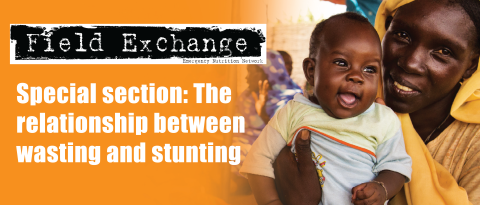Saving children from man-made acute malnutrition in Tigray, Ethiopia: a call to action
This is a summary of the following commentary: Mulugeta A & Gebregziagbher M (2022) Saving children from man-made acute malnutrition in Tigray, Ethiopia: a call to action. The Lancet. https://www.thelancet.com/journals/langlo/article/PIIS2214-109X(22)00023-7/fulltext
The ongoing conflict in Tigray, Ethiopia has led to a humanitarian crisis made even more complex by the blockade of humanitarian aid, the destruction of health facilities and the displacement of millions. As a result, extreme hunger conditions have been reported with children facing increasing risks of acute malnutrition. However, obtaining accurate estimates of malnutrition prevalence in children under five years of age in the region is incredibly challenging.
Between July and August 2021, a team of experts from the College of Health Services at Mekelle University and the Tigray Health Bureau conducted a rapid nutrition assessment to determine the prevalence of acute malnutrition in Tigray and to compare estimates with previous survey data collected prior to the onset of the emergency. Malnutrition in children under five years of age was measured using mid-upper-arm circumference (MUAC) and household food insecurity was measured using the Household Food Insecurity Access Scale (answered by the children’s caregivers). In total, 3,269 children were accessed from 48 randomly selected districts in Tigray. Districts that had security and access issues were not included in the random selection process and the results of the survey.
The analysis indicated that 6% of children surveyed had severe acute malnutrition (SAM) (MUAC <115mm), 22% of children were indicated to have moderate acute malnutrition (MAM) (MUAC ≥115mm and <125 mm). Thus, global acute malnutrition (GAM, a term used to capture definitions of both severe and moderate acute malnutrition) was predicted to be 28%. These estimates showed significant increases from the 2019 estimates (prior to the conflict) wherein SAM prevalence was estimated to be 1%, MAM prevalence was an estimated 8% and GAM was estimated to be 10%. Household food security was also estimated to have dropped sharply from 59% in 2019 to 15% in 2021.
The authors noted that the sharp increase in acute malnutrition prevalence and the significant decline in food security was a direct consequence of the conflict and the subsequent inaccessibility to humanitarian aid and functioning health services. Furthermore, 2021 prevalence figures were likely to be underestimates as the districts with the highest levels of insecurity were not included in the survey. The authors suggested the urgent need for the integration of adequate nutrition interventions into early childhood development policies and health systems. They called on public health and medical communities, and particularly the nutrition community, to advocate for the needs of children in Tigray to reduce the burden of malnutrition and related childhood mortality.


